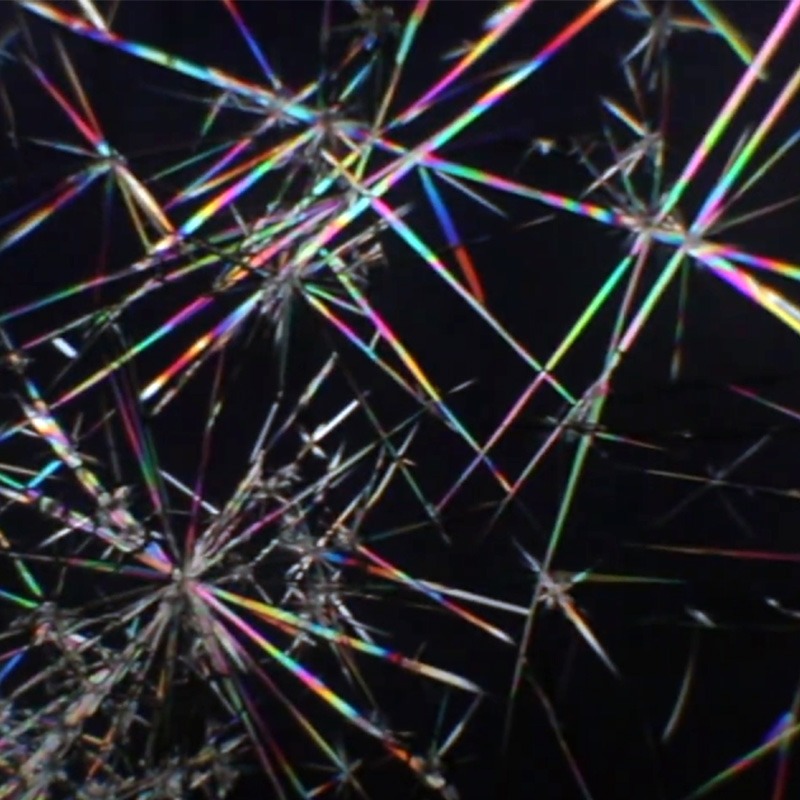The Truth About Oxalic Acid: Is Your Diet Putting You at Risk?

In my last article, “Understanding CIRS: Clarity for Your Symptoms,” I mentioned that I believed that overconsumption of plant oxalates or oxalic acid found in what is considered to be healthy foods caused me to be more susceptible to CIRS (chronic inflammatory response syndrome).
What is Oxalic Acid?
Oxalic acid is a naturally occurring compound in many fruits, vegetables, nuts, and whole grains. Oxalate occurs when the oxalic acid from those foods binds to minerals, possibly inhibiting the absorption of other essential nutrients such as iron, which is why oxalates are also known as anti-nutrients. Although Oxalic acid and oxalates are different, they are often used interchangeably. Oxalate also exists in human beings. They are produced daily in small quantities, typically in times of stress. So, if you’re stressed mentally or physically, you will produce more. The purpose of oxalates in humans is unknown, but we know that oxalates serve as a plant defense mechanism. Plants use oxalic acid to:
- Defend themselves against predators.
- Discourage infections.
- Invade an area so they can compete well for valuable resources within the soil.
Oxalic acid is a defense chemical. It has various forms, including sharp crystals that can cause mechanical damage. Underneath the microscope (illustrated on the right), oxalic acid resembles tiny needless, while others look like sharp glass.

Imagine having these needle or glass-like structures in your body, particularly within your urinary tract; as I’m sure you imagined, it is going to hurt badly or, at the very least, be extremely uncomfortable. In addition, oxalic acid is highly abrasive, and when we consume fruits and vegetables such as kiwi, which are high in oxalic acid, they can cause damage to cells and tissues.
Many people report feeling an instant burning or stinging sensation on the tongue and inside the mouth when eating kiwi. These people are actually feeling the tiny needle-like or glass-like structures that cut and pierce the oral mucosa. Not only have I experienced stinging and burning when eating kiwi, but I have also experienced the same stinging and burning when consuming spinach, another so-called superfood high in oxalic acid.
This damage to our cells and tissues can also cause leaky gut syndrome, making us more vulnerable to other toxins, such as mold, which I believe could have happened to me. I cannot prove this theory, but this is what I have come to believe through my research. Besides, my theory is as good as any explanation I have thus far received from my primary caregivers.
The Great Debate: Is Oxalic Acid Dangerous?
There is a debate on whether oxalic acid is dangerous to everyone or just a small population. However, there is no dispute that oxalic acid has been a known metabolic toxin for centuries. Some healthcare specialists believe that overconsumption of oxalic acid is toxic to all humans. In contrast, others believe they are only harmful to a small population, including those with kidney stones. Ironically enough, oxalates or oxalic acid are acknowledged to contribute to kidney stones.
Further compounding the confusion, those who believe that only a tiny portion of the population needs to be concerned with oxalate never mention which portion of the population needs to be concerned and which portion does not need to be worried. Yet, this article is not aimed at taking any side. Instead, I will arm you with the facts and allow you to decide what course of action you should take. So, let’s continue with why a diet rich in foods with high amounts of Oxalic acid is toxic to some people, if not all.
Overconsumption of Oxalic acid is toxic to humans for various reasons, such as:
- When you eat food high in oxalic acid, you’re eating calcium oxalate crystals, which are not absorbed and are very sharp, like glass. According to some, they look like small weapons when viewed under a microscope.
- It causes irritation and damage to the mucous membranes and soft tissues in the gastrointestinal tract.
- The acids deposit in various bodily tissues, causing mechanical and biochemical damage.
- It is a neurotoxin that negatively affects the nerves.
- Causing the leaching of calcium and minerals from the body, oxalic acid poses a threat to bone health.
- Oxalates are plant compounds that accumulate over time as they cannot be broken down, unlike other types of plant compounds.
- It does not decompose like other molecules when consumed.
- They can bind with minerals in the body and form oxalate salts.
- Oxalic acid lacks metabolic benefits, unlike other phytonutrients.
Testing for Oxalate Toxicity
According to research, there is no reliable test to determine if you are suffering from oxalate toxicity, and it often can be hard to spot. However, if you have been chronically ill for a while without a known cause, and nothing is helping you get better or offering you any relief, then it is worth considering that you may have oxalate issues. The damage caused by oxalate poisoning comes on gradually and subtly. According to Susan K. Norton, Author of “Toxic Superfoods,” with over 35 years of Health Education and Research, no recognized symptom pattern is the tell-tale sign of oxalate toxicity. Every reported case of oxalic acid toxicity is unique. The signs and symptoms associated with excessive oxalate vary widely from person to person. However, some common symptoms are listed below:
Symptoms of Oxalate Toxicity
- Nutritional problems, such as Iron, B-Vitamins, and other mineral deficiencies
- Digestive issues such as leaky gut syndrome, rectal pain or bleeding, IBS
- Thyroid problems
- Inflammation and Autoimmune problems
- Cognitive or mood disorders
- Biting your tongue
- Vulvodynia or pain in the opening of the vagina, or pain when urinating (females experiencing this has reported a burning and stinging sensation. Some females have complained of stabbed like pains or feelings of urinating glass)
- Other urogenital problems such as urinary urgency, high urinary frequency, bladder pain, occasional incontinence, kidney pain, kidney stones, pelvic floor pain, or prostatitis
- Hemorrhoids
- Dropping things – other motor nerve symptoms may include twitching, loss of coordination, unsteadiness, muscle weakness, or tremors.
- Joint pain, neck pain, or any other pain syndrome
- Carpal Tunnel syndrome
- Osteoporosis, weak or broken bones, cracked teeth
- The Head feels too heavy for the neck.
- Migraines
- Bones spurs
- Rashes and skin problems
- Cloudy urine
- Absorption deficiency
- Feeling unstable, weak, easily injured, or slow to heal.
- Bumping into things – although I have experienced several symptoms on this list, this one is all too embarrassingly familiar.
My Story

I first noticed myself bumping into things while walking to lunch with a friend. I kept walking into her. No matter how hard I tried to focus on walking normally, I could not stop crashing into her. I was highly embarrassed by this and kept apologizing, but more importantly, I was confused and frightened as I didn’t understand why it was happening. I avoided walking with anyone for a long while until I learned how to control it somewhat.
Although my bumping-into-things issue hasn’t been entirely resolved, reducing my oxalate intake seems to have improved things for me.
- Premenstrual syndrome – there is evidence that women may dump oxalates according to their menstrual cycle. There is also evidence to support that issues associated with menstruating, like PMS and migraines, might be caused by oxalate dumping (believed to happen when you eliminate oxalic acid-rich foods from the diet very quickly) as opposed to hormones. It is thought that hormonal issues may cause dumping, which can be alleviated by removing oxalates from the diet.
Other symptoms thought to be associated with oxalate dumping include:
- Kidney pain or kidney stones
- Nausea and vomiting
- Diarrhea
- Rashes
- Fatigue and weakness
- Palpitations
- Joint pain and inflammation
- Autoimmune activation
Of course, the symptoms I’ve listed above can also come from other issues. Another sure way of knowing if you are a suspect for oxalate poisoning is if you meet one of the standards below.
- Make a habit of eating very high-oxalate foods.
- A metabolically challenged patient, including a diabetic or older person.
- Have kidney stones or have kidney disease.
- A weight-loss patient treated with drugs or bariatric surgery.
If you think that you may be experiencing oxalate poisoning, the most effective way to confirm it is by gradually reducing your intake of foods that contain high levels of oxalic acid. This will help lower oxalate consumption to below 50 or 60 mg daily. Replace high-oxalate options with nutritious, low-oxalate options, and drink plenty of water to flush out any toxins you may have consumed.
Foods High in Oxalates
If you’re curious about which foods contain high levels of oxalic acid and which have low levels, you may be interested in obtaining a list. However, keep in mind that there is controversy surrounding the accuracy of these lists. To help you out, The Autism Oxalate Project offers a free copy of a list based on recent, reliable testing conducted at the University of Wyoming. Though there is no consensus on all foods that contain oxalic acid, some are generally agreed to have high levels. I have provided a list of those foods for your convenience.
- Spinach
- Chard
- Beets
- Almond
- Chocolate
- Rhubarb
- Soy and soy products such as tofu
- Pinenuts, peanuts, and cashews
- Raspberries
- Sweet potatoes and white potatoes
- Turmeric
- Chia seeds
There is a lot of conflicting information available on the topic of oxalate toxicity. If you are interested in learning more about it, check out the work of Susan K. Norton, a widely recognized subject matter expert due to her extensive research. Here is a link to her website: https://sallyknorton.com/relief/.
I hope that you have found this article helpful. Please share it with someone that you think may be blessed by it. As always, take care of yourselves, and happy healing.
Related Links
Understanding CIRS: Clarity for Your Symptoms
Hydration Essentials: Why Water is Key to Health & Wellness
Mineral Deficiencies: The Root Cause of Human Diseases
Body Invaders: The Reality and Dangers of Human Parasites
